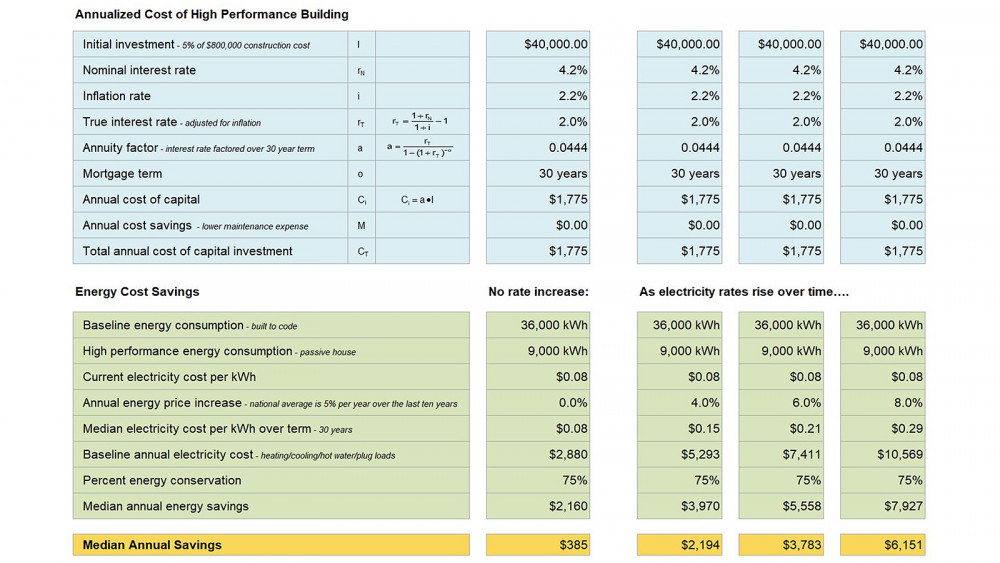Once we have a conceptual design solution that has been approved by a client, we typically provide them with a financial analysis of the costs and benefits of building to the passivhaus level of quality as opposed to simply building to current code minimums.
"By building to passive house quality instead of code minimum, our client is investing in their equity rather than spending even more money on utility bills."
The actual cost of elevating project performance to passivhaus levels varies with the scope of the project. As the size of a project increases, the cost, when expressed as a percentage of the overall budget, drops - at some point, becoming a negative value, meaning the cost of passivhaus is actually lower than built-to-code. When we perform an early cost-benefit analysis, we usually make a conservative allowance of ten percent of the budget for an allowance for the passivhaus upgrade, even though in most cases the actual impact on the budget will be less than that.

This spreadsheet warrants some explanation. The top numbers look at the probable cost of increasing the scope of the project in question by five percent to make room for the passivhaus upgrades to construction. That increased cost needs to be converted into an annual cost, so we need to define a window of time to perform the cost-benefit analysis (we arbitrarily used thirty years here), and we need to look at how the value of that investment will be impacted over time by interest rates and inflation. Since we don't have a crystal ball, we make some conservative assumptions to arrive at a reasonable projection. So using the values shown below, this investment pencils out to an annual capital cost of about $1,775. It would be quite a bit less if our assumptions prove to be overly conservative, which is probable.
The bottom numbers calculate savings in that same window of time. The projected energy savings are the difference between what the building would consume if built to current energy code minimums vs. built to the passivhaus standard. The rate of increase in the cost of power has a huge impact on things, so we show a range of scenarios. The projections will be different for every project, but the important point is that we are empowering our clients to make decisions based on physics and financial realities rather than vague assumptions.
The passivhaus option normally winds up being the more economical option, even if we look at the most conservative potential future for the cost of capital and energy rate increases. By building to passive house quality instead of code minimum, our client is investing in their equity rather than spending even more money on utility bills. Their property will have higher value, not only to them, but to the market, which will only become more appreciative of lower energy use moving into the future.
Add to this the fact that they are reducing their carbon footprint by nearly twenty tons a year - and taking a leadership role in showing how that accomplishment can be achieved simultaneously with enhancing their quality of life with improved comfort, air quality, acoustics, maintenance, and disposable income.

